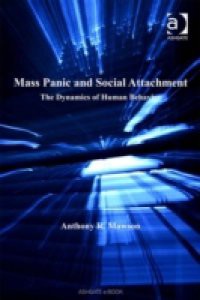How do humans behave when under threat of attack or disaster? How does the social context affect individual behavior?Anthony Mawson provides an illuminating examination of individual and collective behavior under conditions of stress and danger, in response to both natural and manmade threats and disasters.Opening with a question about the interpretation of "mass panic" in combat , the book gradually unfolds into a multidisciplinary analysis of the psychobiological basis of social relationships and the neural organization of motivation and emotion. Mawson provides a comprehensive review and synthesis of the mass panic and disaster literature and offers a social attachment model, that recognizes the fundamentally gregarious nature of human beings and the primacy of attachments. He argues that the typical response to threat and danger is neither fight nor flight, nor social breakdown, but increased affiliation and camaraderie.This book is unique in addressing the behavioral and social aspects of threat and disaster. It will appeal to social scientists across a range of disciplines, to public administrators, and to disaster and public health professionals.

